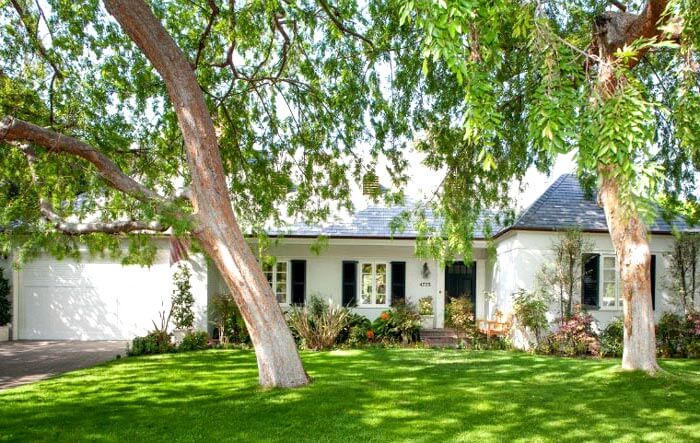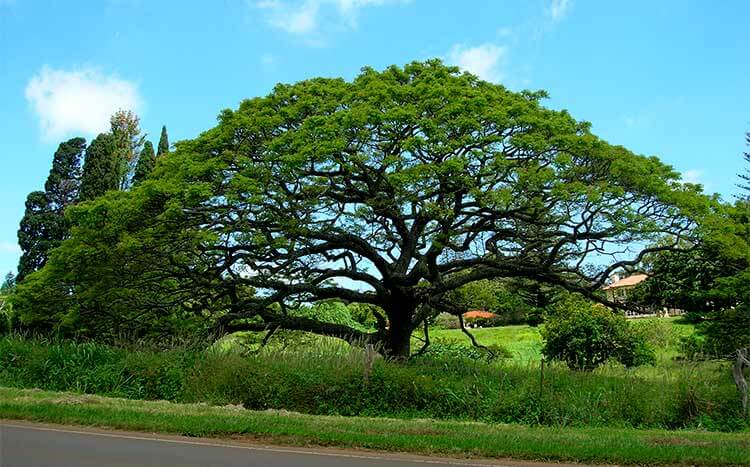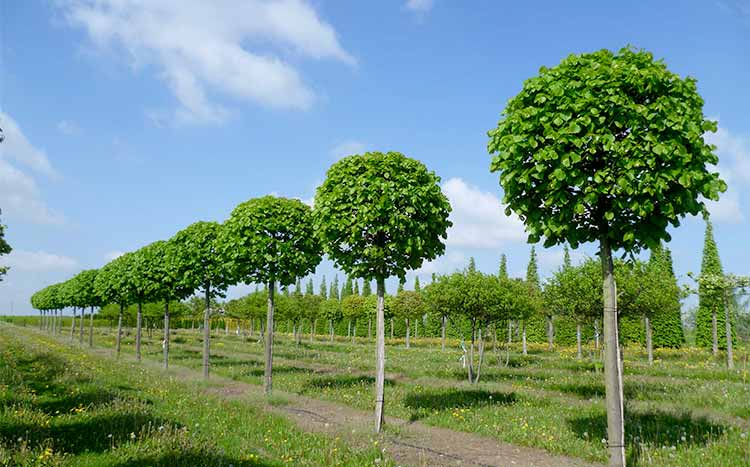Regarding trees, it’s frequent for individuals to mistake a slanting growth pattern for a genuine imbalance. Thus, it’s usual to come across folks who believe that if a tree grows at an angle, it signifies a heightened risk of toppling. Nonetheless, this assumption is generally incorrect in many instances.
An unbalanced tree is simply one whose mechanisms of stability have been compromised thereby increasing its degree of vulnerability to external environmental pressures. Tension and compression wood formation within the trunk is a big part of such mechanisms.
Simply put, the part of the trunk that holds up a greater weight usually develops an extra layer of support otherwise known as compression wood.

What we cover
ToggleWhat causes unbalance trees
Species of tree
There are several causes of trees growing in an unbalanced manner. The main cause is simply the species of the tree itself. Some trees grow in weird shapes not caused by another outside input.
Growing towards light
Trees naturally grow towards light, so planting them under larger trees or in a shaded spot will have them seeking the best position to catch direct sunlight. This can lead to an unbalanced canopy.
Soft soil
Sandy or soft soil can cause trees to develop a lean quite quickly which leads to them being unbalanced. Picking where to plant a tree and the types of trees for the correct oil is vital to avoid this. That being said, this can also happen to any tree in any location after prolonged rain followed by strong winds.

Can you balance the tree with trimming?
Although balancing a tree through trimming is possible, it still requires the skill of a qualified arborist. The tree surgeon must make sure that he or she is actually balancing the tree and not merely creating an illusion of stability.
An illusion of stability in this case means trimming one side of a tree to the same degree as the other for it to look balanced.
Such an approach can be extremely detrimental since it is based on the false perception that a tree’s stability is dependent on the extent to which its branches are balanced on each side.
Consequences of not trimming for structure & balance
Structural pruning involves the removal of branches that unhealthily compete with the main stem for nutrients. The repercussions of not trimming a tree for structure include:
Human Injury
Without trimming, branches usually fall off the tree on their own. Strong winds and storms can however act as catalysts for their falling. Such falls particularly where heavy branches are involved could lead to serious human injury.
Overgrown branches that are positioned lower down the trunk can also cause human injury by coming into contact with the skin and eyes of any passers-by.
Property Damage
The stability that trimming provides to a tree normally helps in preventing the formation of weak branches and a malnourished trunk.
Without such trimming, all the property surrounding the tree, for example, power lines, roofs, gutters, windows, and skylights would be in danger of damage as a result of either a falling branch or trunk.
Disease Infestation
Trimming normally helps in removing the dead, dying, broken, and diseased branches of a tree. If such limbs are not cut off, insects and mold may begin to infest the tree. This is likely to not only deteriorate the health of the tree further but also pose a health risk for the surrounding foliage.
Lack of Visual Appeal
Structural trimming can prove to be the difference between a cheap and an expensive home. Without this kind of trimming, the overall landscape surrounding a house can become so uninspiring.
This can, in turn, drive the value of a home below its actual worth. The owner will therefore be forced to sell at a loss simply because either the front or back yard looks rugged and unkempt.
Dangers of improper trimming
Trimming can only prove to be a worthy investment if it is done properly and skillfully hence the reason why tree trimming professionals are usually recommended.
When done improperly, trimming will likely lead to the following dangers:
Excessive Wounding
Since trimming is guaranteed to create a few wounds, such wounds must be kept at a minimum in terms of both size and number. However, improper trimming usually creates several large wounds which become detrimental to the tree’s health.
This is because trees normally find it easier to recover from small cuts as opposed to their larger counterparts. Larger cuts can even result in the rotting of branches and even the entire tree if not well-treated.
Reduced Yield
Improper pruning can also lead to reduced food production, especially in cases where the crown has almost been completely cut off.
In such cases, the tree is usually unable to produce enough food since it does not have enough vegetation to aid it in photosynthesis. This can lead to stunted growth and eventual death of the tree as a result of malnourishment.
Structural Irregularity
When the crown of a tree is trimmed too heavily, the bark is usually left almost completely exposed to adverse weather conditions such as excessive sunlight. Under such conditions, the tree is often forced to utilize its food reserves to facilitate interior growth.
Although this kind of growth can help the tree to recover some protection for its bark, it usually also leads to structural imbalance as far as the growth and aesthetic appeal of the tree are concerned.
Features of a strong tree
Single central stem
A single central stem usually indicates where and how the nutrients of the tree are flowing. Multiple-stemmed trees often have weaker trunks since they are forced to distribute the available food to many stems.
Trees with one main stem, which averagely weighs half of the total mass are therefore stronger and sturdier than their multi-stem counterparts.
Reasonable branch size
A healthy branch can be identified by the size it portrays at its meeting point with the trunk. It should only be as wide as less than half the diameter of the main stem in such areas.
Strong branch attachments
Healthy trees are also characterized by solid joints between their branches and trunks. Feeble attachments usually signify the weakening of the bark, which often results in limited distribution of nutrients from the trunk to the branches.
Good foliage distribution
For vegetation to have been distributed optimally, it must have covered an average of 2/3 of the stem on every limb.
Which trees have potential to be dangerous?
A hazardous tree is one whose structural defects may lead to human injury and property damage. There are certain types of trees that are more prone to being defective and dangerous. They are listed below;
High traffic areas
Wounding and rotting normally characterize trees that grow in high-traffic areas. Such trees also experience soil compaction which is usually a result of excessive pressing of soil particles by pedestrians and vehicles alike.
New development
New development projects are known to negatively affect indigenous trees by damaging their root systems as a result of excavation.
After rain
Torrential rains usually result in soil erosion. This often leads to a compromise in the stability of a tree’s root system thereby resulting in root failure.
Shallow soils
Shallow soils are known to negatively affect the stability and depth of a tree’s root system. This usually makes such trees extremely susceptible to damage and falling when exposed to strong winds.
Strong winds
Trees growing in areas with strong winds are generally susceptible to windthrow as a result of root failure.
FAQ's
Crown thinning focuses on the removal of secondary limbs with a view to achieving greater canopy illumination and a balanced crown arrangement. It however does not change a tree’s general shape and size.
It is generally advisable not to trim more than 25% of a tree. This can however vary from species to species, for example, it is possible to cut 33% of a Magnolia tree without killing it. One should thus ensure that they leave enough foliage for optimal food production.
Over-trimming can most certainly cause the death of a tree, especially in cases where the crown has been left with little to no foliage. In such cases, the tree will likely die from malnutrition since it will not be able to produce enough food through photosynthesis.
Although pruning can be done to reduce height, it is often extremely difficult and potentially detrimental when it comes to large mature trees. It is, therefore, best to prune all trees at a young age except those that naturally develop a pyramid shape.





